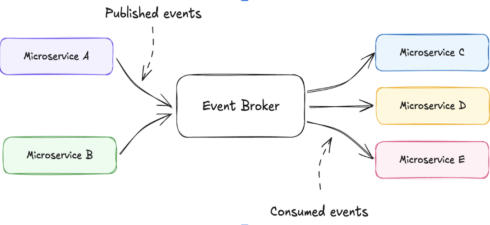
AI is no longer just about single-use automation. The real power lies in multi-agent systems, networks of AI agents that work together, each specializing in a task but coordinating as part of a larger, intelligent system.
A real-world example is AI-driven revenue operations, where a lead-scoring agent predicts conversion rates while a pricing agent dynamically adjusts discounts based on real-time engagement. Financial institutions are deploying AI fraud detection agents, where one monitors transactions for anomalies, another agent cross-checks with external data sources, and a third triggers security alerts.
In each case, no single agent has all the answers, but together, they handle complex, interdependent tasks that no single model could manage alone. This is what makes multi-agent AI compelling, it scales expertise, automates high-value workflows, and adapts to dynamic conditions in ways that fixed-flows systems never could.
Despite their promise, productionizing multi-agent systems is hard.
Most AI agent frameworks are great for prototypes but fall apart when scaling to real-world systems. Debugging agent decisions is opaque. Managing resources across multiple agents is messy. Keeping data consistent is hard.
The biggest obstacle? Communication.
How agents exchange information determines whether they function smoothly or collapse under complexity. And we’ve seen this problem before with microservices. Before event-driven design, microservices ran into the same scaling challenges that multi-agent systems face today. The solution then is the solution now.
Why Scaling AI Agents Is Harder Than You Think
Multi-agent AI is moving beyond prototypes and into real-world applications, but many businesses are already running into serious roadblocks. Building and scaling any distributed system is a challenge, especially without the right design. As complexity grows, so do coordination failures, bottlenecks, and integration pains.
AI applications introduce an additional layer of difficulty: stochasticity.
Unlike traditional software, AI models don’t always produce the same output given the same input. This uncertainty makes debugging, synchronization, and decision-making even harder, requiring architectures that can handle variability from day one.
Early implementations of multi-agent AI are already showing cracks, systems that are brittle, hard to debug, and difficult to scale. If companies don’t rethink their approach now, they risk deploying architectures that fail under real-world conditions, just as microservices once did.
The Challenges of Multi-Agent Collaboration
AI agents don’t operate in isolation.
They need to share context, coordinate actions, and make real-time decisions—all while integrating with external tools, APIs, and data sources. When communication is inefficient, agents end up duplicating work, missing critical updates from upstream agents, or worse, creating bottlenecks that slow everything down.
A breakdown of multi-agent dependencies
Beyond communication, multi-agent systems introduce additional scaling challenges:
- Data Fragmentation – Agents need access to real-time data, but traditional architectures struggle with ensuring consistency without duplication or loss.
- Scalability and Fault Tolerance – As the number of agents grows, failures become more frequent. A resilient system must adapt without breaking.
- Integration Overhead – Agents often need to interact with external services, databases, and APIs, but tightly coupled architectures make this difficult to scale.
- Delayed Decision-Making – Many AI-driven applications, from fraud detection to customer engagement, require real-time responsiveness. But conventional request/response architectures slow this down.
These challenges require a shift in how we think about agent coordination.
The Scaling Problem: We’ve Seen This Before
We’ve seen this problem before.
When microservices first emerged, they promised flexibility and modularity, but as they scaled, their communication patterns became a bottleneck. Services relied on direct API calls, creating rigid dependencies that made systems fragile, hard to scale, and difficult to evolve. The more services were added, the more tangled the system became.
The solution? Event-driven architecture.
Event-driven microservices
Instead of calling each other directly, microservices began publishing and subscribing to events. This shift reduced dependencies, improved scalability, and increased resilience—enabling systems to grow without breaking.
Multi-agent systems are facing the same challenge. Just like microservices, agents need to exchange information, maintain context, and coordinate tasks. But when they communicate through direct request/response calls, they create the same scaling issues; brittle dependencies, bottlenecks, and a system that’s too rigid to adapt.
If multi-agent AI is going to work at scale, it needs the same solution: an event-driven approach that allows agents to operate independently while staying in sync.
Specifying the Interface for Agents
A critical insight into multi-agent systems is that agents don’t act in isolation—they react to events. Instead of being hardwired to call each other directly, they process structured updates that guide their behavior.
Like microservices, they can be modeled around three core functions:
- Input – Consuming events or commands.
- Processing – Applying reasoning, making decisions, or gathering additional data.
- Output – Emitting actions for downstream consumers.
This reactive design eliminates the need for hardcoded interactions, enabling agents to work in parallel, adapt dynamically, and scale without breaking the system. Instead of being tightly bound to each other, agents simply respond to events, making the entire system more flexible and fault-tolerant.
We’ve seen this shift before. It’s time to apply the same principles to multi-agent AI.
The Event-Driven Approach: Let Agents Act, Not Wait
At the core of this model is a shared language, a way for agents to exchange information, stay aligned, and collaborate efficiently. Events serve as this language, acting like a system-wide group chat that keeps agents in sync while allowing new ones to integrate smoothly.
When something significant happens, like a high-value lead being identified or a security vulnerability being detected, agents react to events rather than waiting for instructions.
Event-driven multi-agent communication
This approach brings critical advantages:
- Loose coupling: Agents publish and subscribe to events, allowing new capabilities to be added without breaking existing workflows.
- Parallel execution: Multiple agents can respond to the same event at once, increasing efficiency.
- Resilience: If an agent fails, the event log ensures no data is lost—it picks up where it left off.
Think of it like a newsroom. A breaking story (event) comes in, and reporters (agents) jump on different angles, conducting interviews, writing articles, producing videos, without an editor assigning every task. Work happens in parallel, information flows dynamically, and the system adapts in real time.
Scaling Multi-Agent Systems the Right Way
Event-driven architectures don’t just improve efficiency, they solve fundamental scaling problems:
- Real-time decision-making: Agents act instantly on new data instead of waiting in a request queue.
- Simplified coordination: No need for a central controller dictating every step. Agents work independently but in sync.
- Future-proofing: Adding or modifying agents doesn’t require reworking existing ones. The system evolves naturally over time.
By making agents event-driven, businesses can avoid the same scaling traps microservices faced.
Final Thoughts: Why This Matters
Multi-agent AI systems are too powerful to be held back by bad architecture. The request/response model is a bottleneck. Event-driven design is the way forward, allowing agents to communicate dynamically, react in real-time, and scale effortlessly.
Just as microservices evolved from tightly coupled APIs to event-driven architectures, multi-agent AI needs the same transformation.
If your company is building AI-driven automation, now is the time to rethink how agents communicate. The shift to event-driven design isn’t just an optimization, it’s the foundation for scalable application design. The companies that embrace this shift will be the ones that turn AI agents from promising prototypes into real, production-grade systems.



